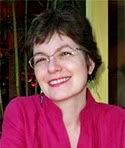After my mighty swearing learning curve with ePub, I had to recharge with the stuff that is fueled by imagination and requires nothing more complex than ink, pencil and paper.
I simply had to eat visuals.
I absorbed some of my favorite illustrators of all time,William Blake, John Tenniel, Gustave Doré, Arthur Rackham, Frank C. Papé, Maurice Sendak, Pauline Baynes, and more currently Posy Simmonds (who does terrific social satire in graphic novels that make adroit reuse of 19th century plots) and Shaun Tan.
I discovered Tan is working (as director, artist and author with a team) on an animated version of his picture book The Lost Thing. See this, and this. He too is adapting work into a new technology. He is turning the drawn by hand into its CGI incarnation. Paper to moving image. A picture book is a series of moments stilled on a page and it must be tricky making it merge into one moving picture. Plus when I read or look at illustrations, I can slow down as much as I want, the pacing is controlled by reader vs pacing by film maker. But it is even more than the transformation of full animation, the technology itself shapes the artistry. And with every aspect having to be created, the suggestively fuzzy must be harder to hold onto.
I can see the advent of technology in photoshop, illustrator, and indesign. Each new release of the software offers new "tricks" and graphics reflect their use. You can date design and artwork created on computers by how most people have used the available technology. Of course, having a strong vision will keep the tricks from taking over. Tan speaks so thoughtfully about the differences between the two mediums. How the possibilities of animation can easily overwhelm what is at heart a simple story.
I am sure Tan's adaptation will be terrific, and stay true to his vision, looking at the video and images in the article. But I am willing to guess it has had its technical frustrations and negotiations. Of course, spill your coffee on your drawing in progress to meet the technical oops of "by hand."
There is also this, a pencil sketch is subject to areas of smudge or faintness or all scribbled-in-ness that means it is not fully explicated in those areas. And this is good, the mind likes to fill in or ignore, just as we do when walking down the sidewalk. And about those walks, I come back refreshed from every one I take. It is as if the mind finds the increased oxygen, the rythm of walking, and the unfolding perspectives of urban and natural under the sun, the mist, or the night, all trigger something deep. Or at least burn off the calories from my chocolate habit.
To illustration! To walks! To the muse of the streets!
Sunday, March 7, 2010
Subscribe to:
Post Comments (Atom)







No comments:
Post a Comment